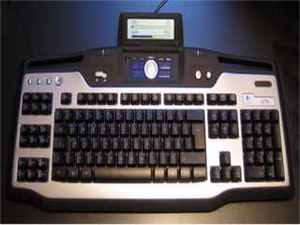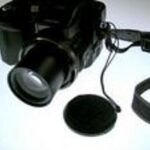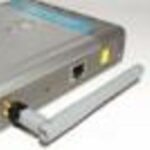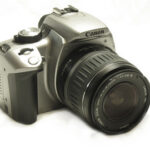USB has become a major part of the computer world since its first development in 1995. Because of its near universality and incredible ease of use, it has become the connection of choice for manufacturers of all sorts of computer related accessories: from keyboards to digital cameras, modems to printers to mass storage devices.
Until 2002, the USB used by computer and computer accessory manufacturers was known as USB 1.1. This has since been upgraded to the newer and much faster USB 2.0. However, there are many people out there who use older computers that only have USB 1.1 ports, and there are still devices which utilize the USB 1.1 system.
Basics of USB 1.1
The original USB 1.0 was created in 1995. This was replaced a few months later with a new, improved USB 1.1 that had repaired some of the bugs in the original system.
USB stands for Universal Serial Bus. It is a method of data transfer that in a way mimics the way an actual bus brings people back and forth between places. It is universal because any number of different devices can send information back and forth between these connections at the same time.
Besides the USB port (where the USB wire is connected into the computer) and the USB wire (that links the USB device to the USB port and computer) USB also has developed devices referred to as hubs. Similar to bus station hubs or airport hubs, this is a unit that can connect to a number of different devices via USB and then connect to the computer via a single wire. This allows for the use of a number of devices without requiring a multitude of USB ports on your actual computer (although many computers manufactured these days do come with a number of USB ports).
USB is most famous for its Plug and Play technology, where a device is connected to the computer via the USB port and then works instantly, without the need for installation of any device specific drivers.
This is able to be done with USB thanks to the standardization of USB connections. The development of USB is overseen by an organization known as the USB Implementer’s Forum (USBIF). They are in control of all changes and development to USB technology.
For the original USB 1.1, the USBIF created an implementation system known as the Open Host Controller Interface (OHCI). This was to be the standard for all USB created devices, wires and ports. However, the chip manufacturer Intel later created a new implementation known as Universal Host Controller Interface (UHCI).
Although this created a system of two different interfaces, computer manufacturers and the developers of operating systems worked together to be able to install drivers and hardware necessary to handle both implementations on their computers. This means that we consumers do not in most cases need to worry about the differences between OHCI and UHCI.
USB 1.1 has two speeds. Low Speed goes at about 1.5 Mb/s. This is for use with what are known as Human Interface Devices (HIDs), because they are what allows a person to interact with their computer, such as a mouse or a keyboard. An HID does not require high interface speeds, thus to conserve energy they operate at USB Low Speed.
Full Speed is quite a bit faster than Low Speed, maxing out at 12 Mb/s. This is the speed used by most other devices that would use a USB connection.
Using USB 1.1
If you have a device which connects to your computer through USB, the process is generally fairly simple. As noted above, the majority of USB devices require no special drivers, and are usable instantly upon installation. However, some more complicated devices will require drivers to be installed. Older machines will oftentimes require driver installation. However, such drivers are generally included with the product, or can be found on your Operating System CD.
All USB ports and wires utilize a standard symbol: three arrows pointing out of a single circle. This lets you know that this is the USB port or connector. USB can only be plugged in one way, so it is easy to know if it is installed properly or not.
USB 2.0
In the late 1990’s an improvement to USB 1.1 was devised and a project was begun that would reach fruition in 2002. This was USB 2.0, the next generation of USB.
There are some minor technical differences between USB 1.1 and USB 2.0, however these are of little importance to the average user. Unlike USB 1.1, there is only one implementation allowed for USB 2.0 by the USBIF, making it more easily universal than the original. The implementation for USB 2.0 is known as the Enhanced Host Controller Interface, or EHCI.
The primary difference of the new USB 2.0 is speed. While retaining the original Low and Full Speeds of USB 1.1, USB 2.0 has create a High Speed, which maxes out at 480 Mb/s, 40 times the speed of the original!
With this new speed, it is possible to connect almost any device to your computer through a USB connection. The only exceptions to this rule are displays and monitors, which require too much power and transferability to be limited to even a USB 2.0 connection. However, this might change in the future as USB continues to develop.
If you are not sure whether or computer currently has USB 1.1 or USB 2.0, it is easy to find out. If you are on a Windows machine, simply open up the device manager and look at your USB device. If it is USB 2.0 it will say Enhanced somewhere in the product description. If you do not see it, then you are using USB 1.1
For Linux users, the lspci command will give you a list of all peripheral devices connected to your computer. The USB device should be listed as one of the integrations mentioned above, either OHCI or UHCI if it is USB 1.1, and EHCI if it is USB 2.0.
USB vs. USB 2.0
One of the major concerns of the USBIF is the ability to interchange USB and USB 2.0. For example, if you have upgraded to a USB 2.0 port but still have devices that operate on USB 1.1, you can plug in your 1.1 devices into the 2.0 port without any difficulty. However, it should be noted that using a USB 2.0 port for a 1.1 device will not cause the device to run faster than it was designed to; it will still be limited to 12 MB/s (or if it a mouse or keyboard, 1.5 Mb/s).
This interchangeability runs both ways, however. USB 2.0 wires and devices can be plugged into a USB 1.1 port. However, this can sometimes cause difficulty as USB 1.1 cannot go faster than 12 Mb/s. If your device requires a faster transfer rate, it will not be able to operate through the 1.1 port. Even if it can run, it might be significantly slower and have other system difficulties. If possible, it is best to avoid using 2.0 devices in 1.1 ports.
However, if you are looking for the best in connectivity, USB 2.0 is definitely the better option. It retains all the features that made USB 1.1 such a popular tool, and has added a much faster speed that far excels that of the original USB 1.1.
Most computers made since 2002 have come with USB 2.0 as a standard addition, and has time goes on the amount of new computers with USB 2.0 coming straight from the manufacturer will only increase, and USB 1.1 will eventually become a thing of the past. It will never totally disappear, however, since many devices, such as the aforementioned HID, do not require the High Speed offered by 2.0 and so will continue to be manufactured with 1.1 ports and wires. However, thanks to the interchangeability of USB, this will cause no problem to the consumer.
The Future of USB
Although USB 2.0 is a powerful tool, USB is continuing to develop newer generations and uses for USB technology. One of the most promising of these new USB technologies is wireless USB, which will allow users to connect peripheral devices to their computer without the use of cables or wires. Although not available yet, wireless USB is certainly a part of the next generation of USB technology.







